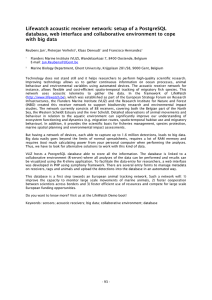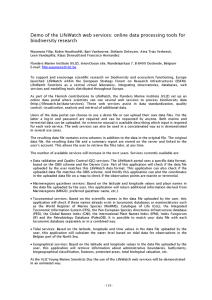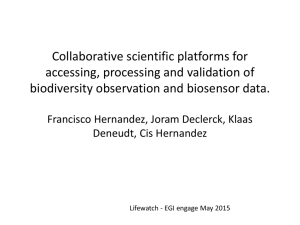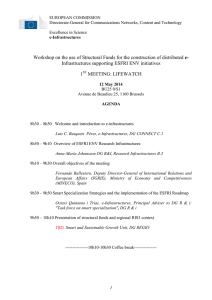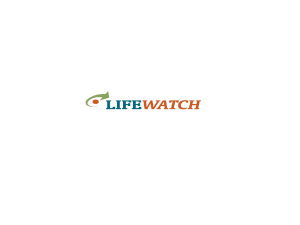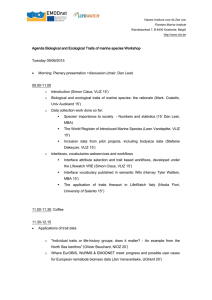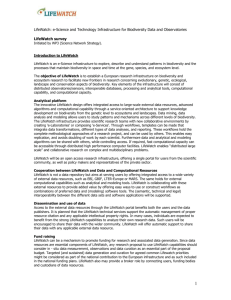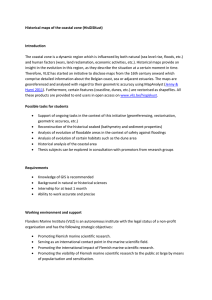The LifeWatch infrastructure (demo through poster series)
advertisement
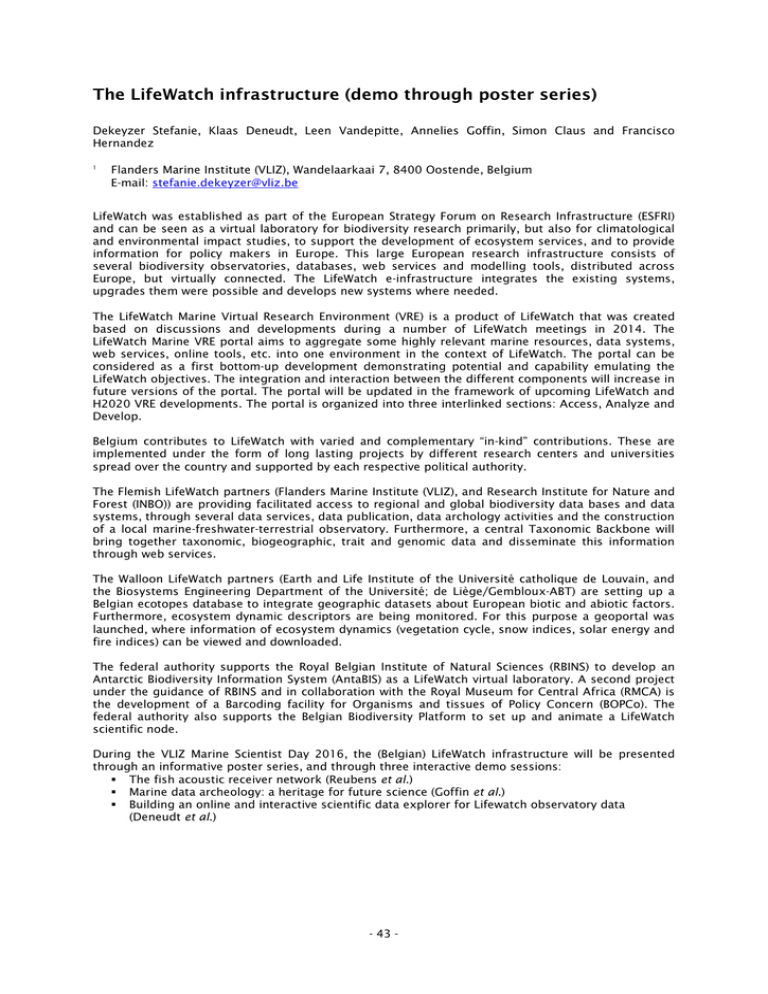
The LifeWatch infrastructure (demo through poster series) Dekeyzer Stefanie, Klaas Deneudt, Leen Vandepitte, Annelies Goffin, Simon Claus and Francisco Hernandez 1 Flanders Marine Institute (VLIZ), Wandelaarkaai 7, 8400 Oostende, Belgium E-mail: stefanie.dekeyzer@vliz.be LifeWatch was established as part of the European Strategy Forum on Research Infrastructure (ESFRI) and can be seen as a virtual laboratory for biodiversity research primarily, but also for climatological and environmental impact studies, to support the development of ecosystem services, and to provide information for policy makers in Europe. This large European research infrastructure consists of several biodiversity observatories, databases, web services and modelling tools, distributed across Europe, but virtually connected. The LifeWatch e-infrastructure integrates the existing systems, upgrades them were possible and develops new systems where needed. The LifeWatch Marine Virtual Research Environment (VRE) is a product of LifeWatch that was created based on discussions and developments during a number of LifeWatch meetings in 2014. The LifeWatch Marine VRE portal aims to aggregate some highly relevant marine resources, data systems, web services, online tools, etc. into one environment in the context of LifeWatch. The portal can be considered as a first bottom-up development demonstrating potential and capability emulating the LifeWatch objectives. The integration and interaction between the different components will increase in future versions of the portal. The portal will be updated in the framework of upcoming LifeWatch and H2020 VRE developments. The portal is organized into three interlinked sections: Access, Analyze and Develop. Belgium contributes to LifeWatch with varied and complementary “in-kind” contributions. These are implemented under the form of long lasting projects by different research centers and universities spread over the country and supported by each respective political authority. The Flemish LifeWatch partners (Flanders Marine Institute (VLIZ), and Research Institute for Nature and Forest (INBO)) are providing facilitated access to regional and global biodiversity data bases and data systems, through several data services, data publication, data archology activities and the construction of a local marine-freshwater-terrestrial observatory. Furthermore, a central Taxonomic Backbone will bring together taxonomic, biogeographic, trait and genomic data and disseminate this information through web services. The Walloon LifeWatch partners (Earth and Life Institute of the Université catholique de Louvain, and the Biosystems Engineering Department of the Université; de Liège/Gembloux-ABT) are setting up a Belgian ecotopes database to integrate geographic datasets about European biotic and abiotic factors. Furthermore, ecosystem dynamic descriptors are being monitored. For this purpose a geoportal was launched, where information of ecosystem dynamics (vegetation cycle, snow indices, solar energy and fire indices) can be viewed and downloaded. The federal authority supports the Royal Belgian Institute of Natural Sciences (RBINS) to develop an Antarctic Biodiversity Information System (AntaBIS) as a LifeWatch virtual laboratory. A second project under the guidance of RBINS and in collaboration with the Royal Museum for Central Africa (RMCA) is the development of a Barcoding facility for Organisms and tissues of Policy Concern (BOPCo). The federal authority also supports the Belgian Biodiversity Platform to set up and animate a LifeWatch scientific node. During the VLIZ Marine Scientist Day 2016, the (Belgian) LifeWatch infrastructure will be presented through an informative poster series, and through three interactive demo sessions: The fish acoustic receiver network (Reubens et al.) Marine data archeology: a heritage for future science (Goffin et al.) Building an online and interactive scientific data explorer for Lifewatch observatory data (Deneudt et al.) - 43 -
